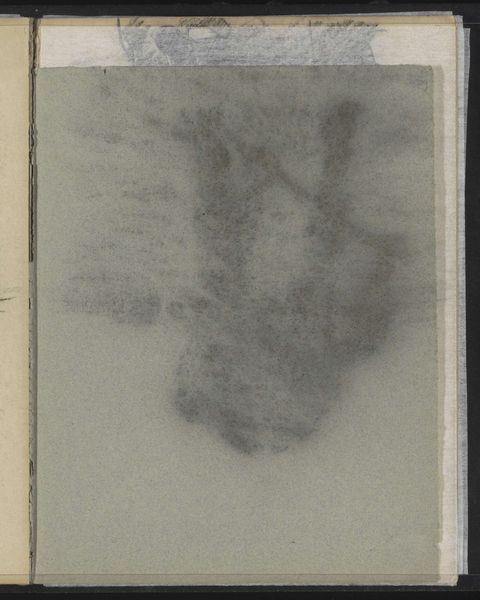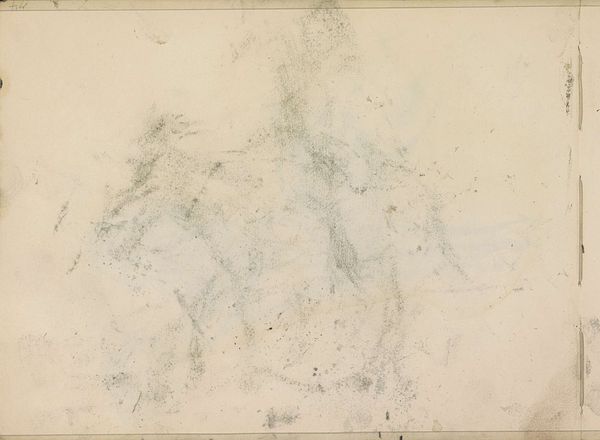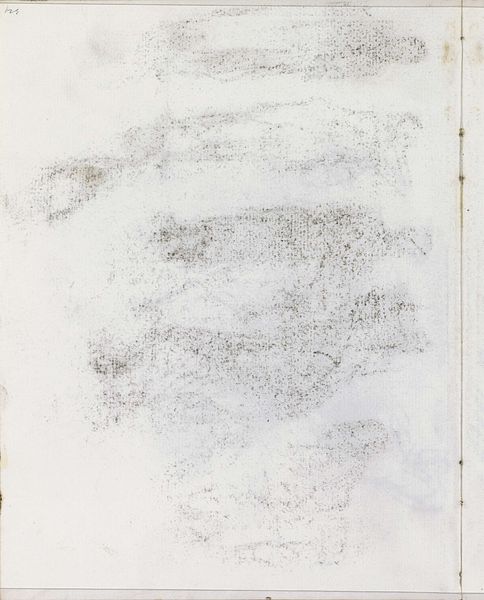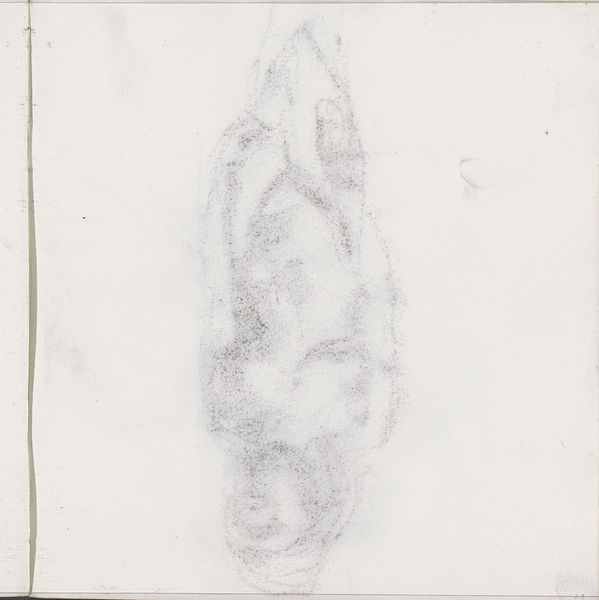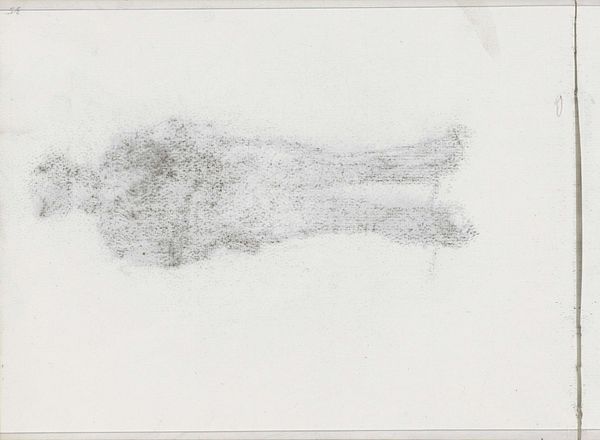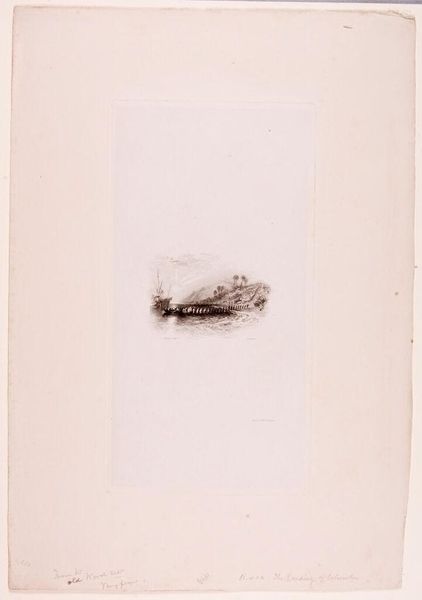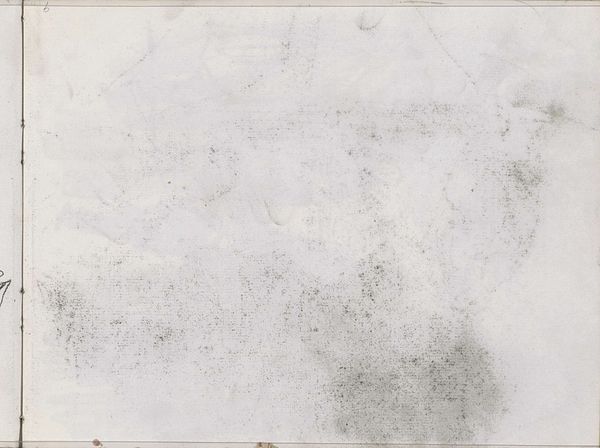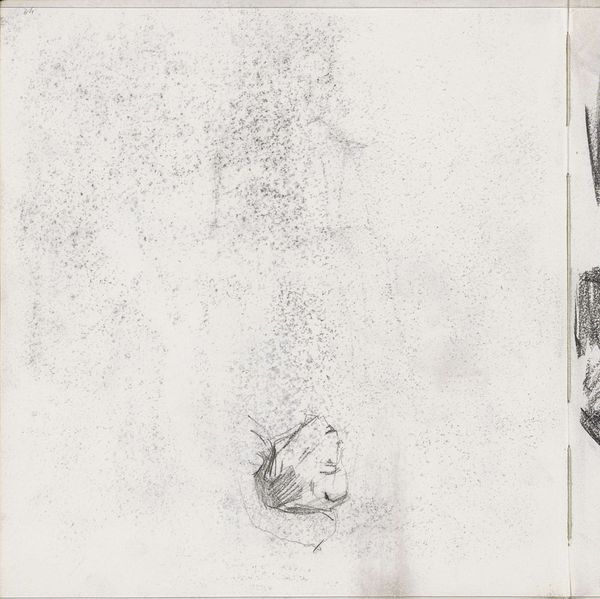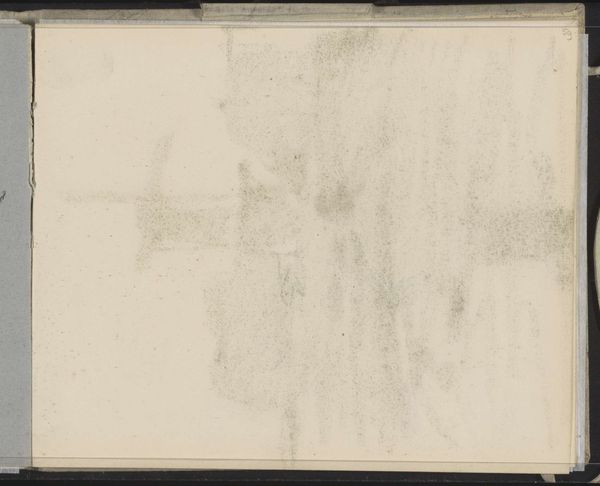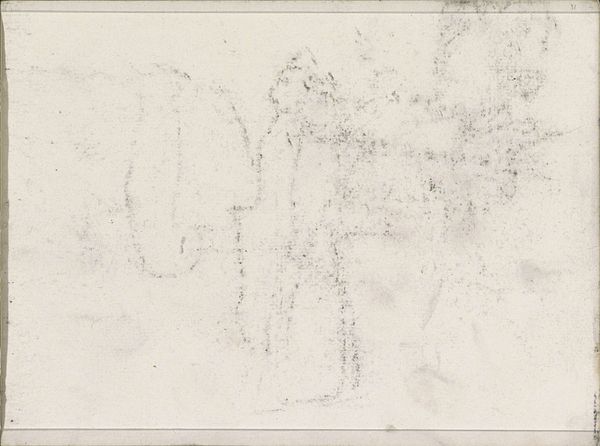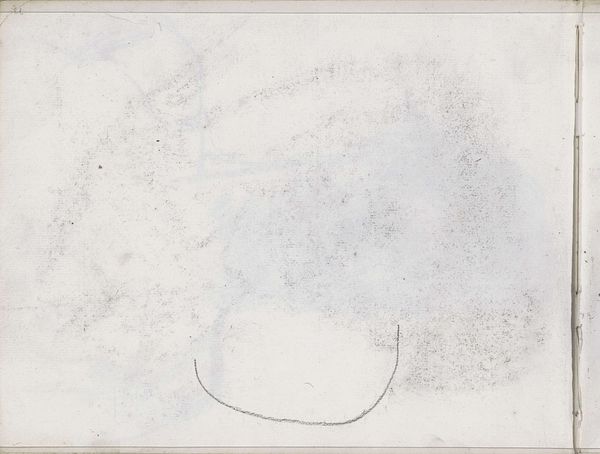
drawing, paper, graphite
#
drawing
#
pencil sketch
#
paper
#
abstraction
#
graphite
#
mixed medium
#
modernism
Copyright: Rijks Museum: Open Domain
Curator: Isaac Israels created this intriguing piece, “Abklatsch van een krijttekening,” sometime between 1875 and 1934. It resides here at the Rijksmuseum. What’s your initial take on it? Editor: Well, it’s remarkably subtle. The limited tonal range, almost monochromatic, creates a hazy, dreamlike quality. There’s a tension between the emptiness and the dense graphite area that draws me in. Curator: That "dense graphite area," as you call it, is where the "Abklatsch" – the transfer or impression – comes in. Think about the process involved. What kind of labor yields this ghostly image? It's modern, abstract, but the creation is also rooted in a very physical interaction with materials. Editor: True, the materiality is key. The smudging and blurring indicate an indirect process, suggesting a loss of direct control by the artist. The surface of the paper, too, it isn’t pristine; the tooth of the paper itself impacts the work’s formal presentation. Curator: Exactly. Israels may be commenting on the reproducibility of images or even the changing role of artistic skill in a modernizing world. Consider his position—did he see value in mechanically reproduced images, or was he being critical? How does this drawing interact with broader trends in art production at that time? Editor: You make a valid point regarding reproduction. The composition, particularly the central blotting, creates this effect. This focal point has an almost Rothko-esque effect on the viewer, asking the mind to decode forms and textures while maintaining overall visual coherence. Curator: Indeed, but let’s remember the time and context. It wasn't about color fields. This abstraction is built on mark-making and likely reflects the availability, cost, and role of paper and drawing in society at that moment. The piece also suggests a rapid, almost throwaway creation; it lacks any formal commitment that suggests labor was poured into creating the picture. Editor: That adds a richer, social perspective that helps reframe what might have been dismissed simply as a loose formal experiment. Curator: Precisely. Understanding its construction illuminates the socio-economic implications inherent in artistic choices of this period. Editor: A fresh and convincing interpretation – seeing the work through this particular lens has truly transformed my initial view.
Comments
No comments
Be the first to comment and join the conversation on the ultimate creative platform.

